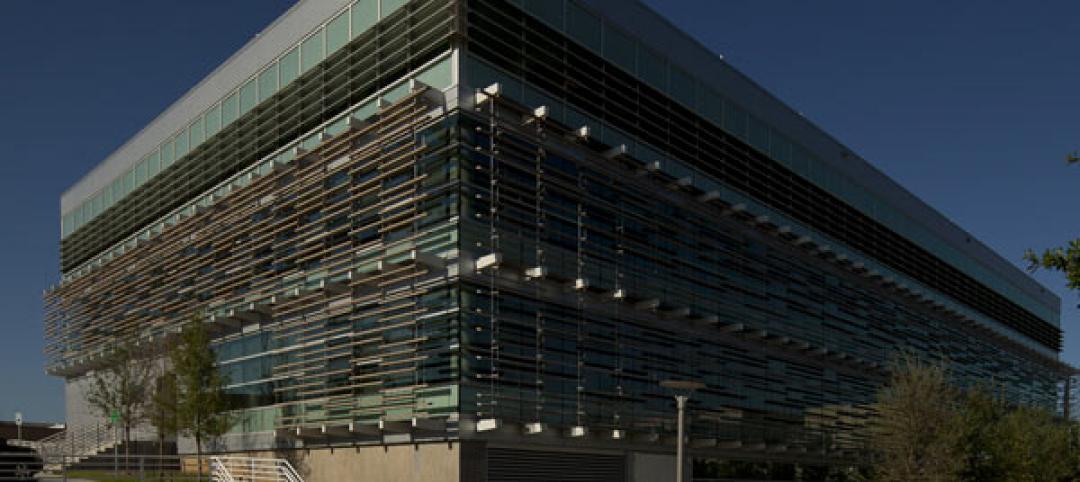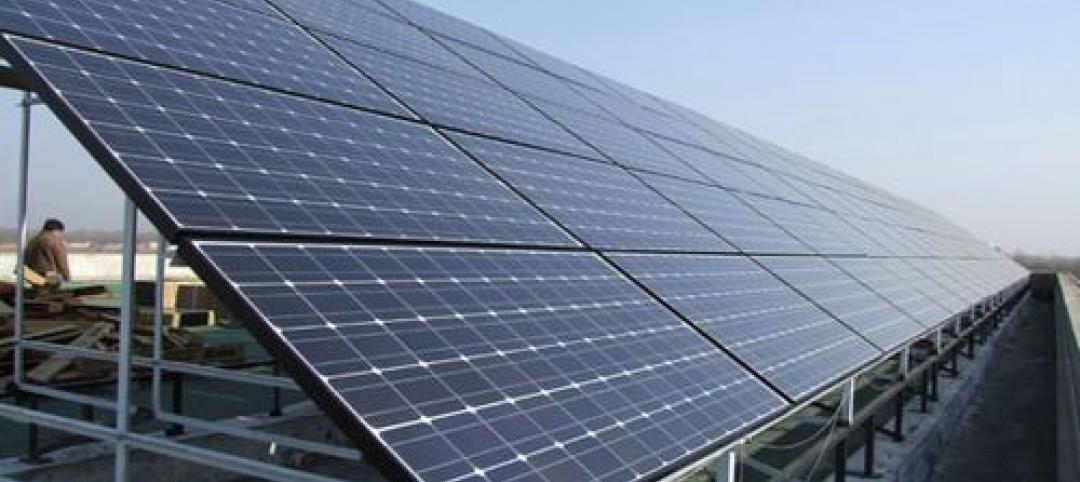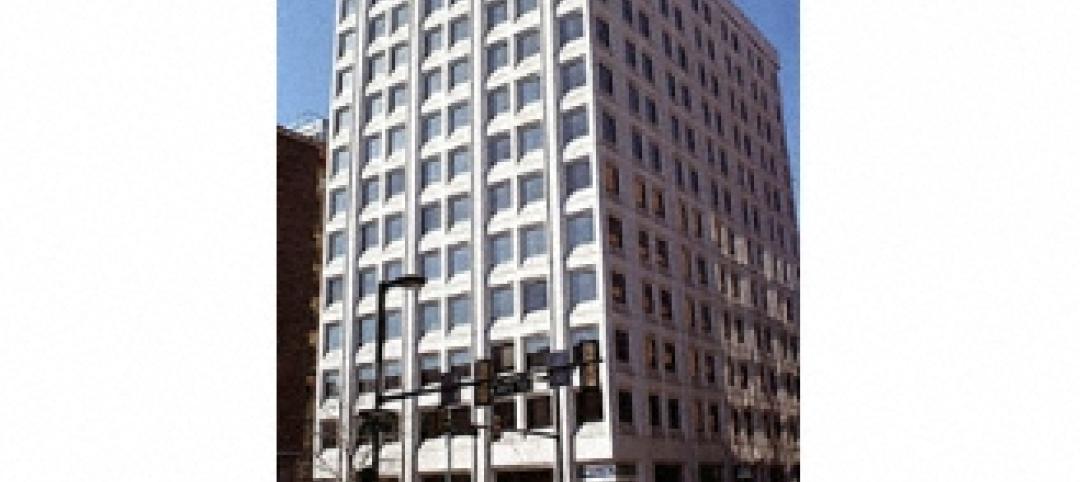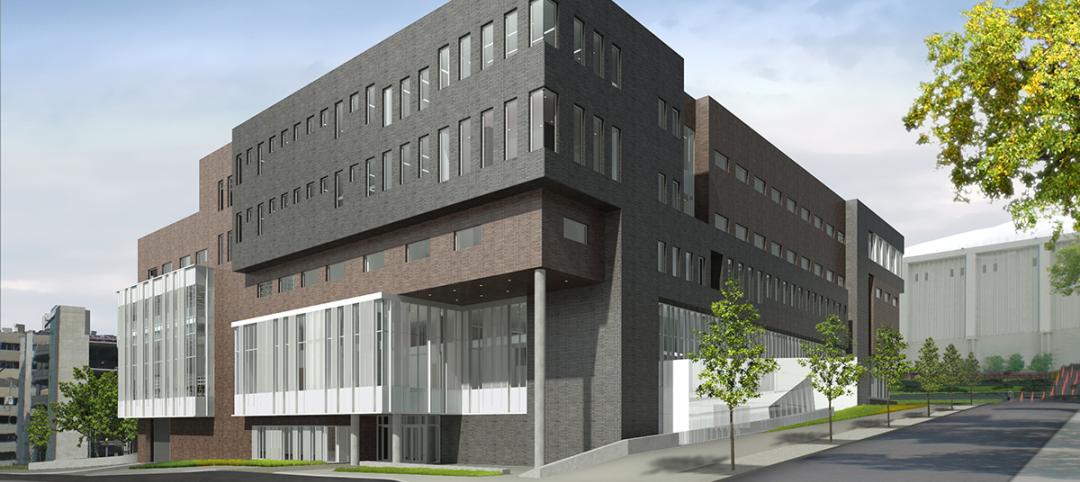“This building may look very cool and modern, but it’s all about performance,” says Marc Butler, CEO and president of J.R. Butler Inc., the Denver-based glazing contractor that helped produce nearly 600 high-performance windows for the U.S. Department of Energy’s new National Renewable Energy Laboratory, near Golden, Colo. From the outset, the client required its 222,000-sf facility to meet the highest performance goals attainable: LEED Platinum, net-zero-energy use, and energy performance 50% better than ASHRAE 90.1 2004. “Those are the three things we made all the decisions around,” says Butler.
It’s ambitious to take on any project with such aggressive energy-efficiency goals, but to move ahead knowing that a significant amount of the building would be punched full of window openings—the building has a wall-to-floor square footage ratio of 4:1—is a prospect many Building Teams would gladly pass up. Throw in a couple additional challenges, such as a tight $64 million budget and a 500-page design-build contract with 50% of the fee at risk if terms weren’t satisfied, and the Building Team of RNL (architect), Stantec (engineer), Haselden Construction (GC), and J.R. Butler had their work cut out for them.
Their solutions for the building’s performance requirements involved the use of innovative window products to optimize and manage daylighting and views and control natural ventilation and unwanted heat gain.
“Daylighting and solar energy are at the core of the building,” says Philip Macey, AIA, design-build project manager for Haselden. “Free lighting is the most important thing a designer and contractor can give a building owner.” The facility’s H-shaped layout, with its two narrow 60-foot-wide wings, ensures that no workstation is more than 30 feet from a window—in a building designed for 800 employees. “During an average day, you should never have to turn on the lights,” says Butler.
Daylighting enters the building from all sides, meaning each façade has numerous openings—a design hardly conducive to a tight, super-efficient building. Window units had to plug potential leaks. “The R-value in the walls was huge, which meant the R-value in the glass had to be huge,” says glazing contractor Butler. “It’s a significant challenge for glass to give you good insulation value.” Butler, whose firm has a license agreement to unitize for Wausau Windows and Wall Systems, specified Wausau’s 4250 Series and created a SuperWall system with help from SageGlass, Viracon, and Linetec using energy and light modeling data from Stantec.
The thermal modeling process lasted about 15 months. There was so much data to be crunched that Butler says it took a dedicated computer bank three weeks to spit out supposedly “final” results each time a change was made. “Every time we thought we were good and ready to order the windows, something else would bump the performance of the window,” says Butler. “The balancing act was crazy.”
As a result of the complex modeling, eight different types of glass were specified to help balance light, U-value, and shade coefficient. Wausau’s high-performance aluminum frames (with 70% recycled content using secondary billet) were fitted with triple-pane glazing that features Viracon low-e coatings (sometimes two or three different coatings). In some instances, electrochromically tintable glass (from Sage Electrochromics), which darkens when voltage is applied to it, was used. Linetec finished the aluminum frames in a silver-hued mica Kynar coating and supplied the thermal barrier system. Fabrication of the custom windows took about 10 weeks, with both Wausau and J.R. Butler manufacturing the units.
Wausau also constructed custom sunshades, called bonnets, to box the windows, adding both a distinguishing architectural element and additional shading. “The sunshades give people the ability to look out and see the full Colorado landscape but without having direct sunlight in their face,” says Butler. “In our studies of the sun, when you get that spring and fall and winter sun, the sidepieces block that out. When you have high summer sun, the top shade blocks that out.”
The problem with using all that super high-performance glazing and additional shading devices is that it reduces visible light transmittance, which conflicted with the client’s wish for interiors flooded with natural light. To compensate, clerestory windows were installed above the bonnets and fitted with fixed, mirrored light louvers between the panes that reflect light upward, bouncing it off the ceiling and funneling it deep into the building—an average 20 to 30 feet inside. The Building Team also employed 13-foot-high ceilings, workstation furniture with low walls, and bright interior paint colors to keep interiors bright. “It got to the point where we had to make sure interior light wasn’t too overwhelming,” says Butler.
The operable clerestory windows are programmed to automatically open at night to purge heat buildup and cool the building. “It’s a smart alternative to having the air-conditioning kick on,” says Butler. Those operable windows almost never made it beyond the drawing board, however, because the DOE worried about the building being targeted for a bomb or poison gas attack and being caught with the windows open. However, the Building Team was able to obtain a special code variance, and numerous safeguards were put in place to protect against such an incident.
The custom windows and installation were costly, with J.R. Butler being the project’s second largest subcontractor. Butler acknowledges that while the scope of work was appropriate for this particular client, “it’s still very expensive for the private sector, but they can learn from this technology” and incorporate ideas into their projects as budgets permit.
The National Renewable Energy Laboratory’s Sustainable Features
• High-efficiency windows
• Precast CMU
• Radiant heating and cooling
• Underfloor ventilation
• High-efficiency computers, monitors, and other office equipment
• Transpired solar collectors
• On-site solar energy system
• Use of recycled and reclaimed materials, including aggregate from an airport runway and structural steel columns from natural gas piping
Related Stories
| Dec 27, 2011
BD+C's Under 40 Leadership Summit update
The two-day Under 40 Leadership Summit continued with a Leadership Style interactive presentation; Great Solutions presentations from Under 40 attendees; the Owner’s Perspective panel discussion; and the Blue Ocean Strategy presentation.
| Dec 27, 2011
Suffolk Construction celebrates raising of Boston Tea Party Ships & Museum cupola
Topping off ceremony held on 238th Anniversary of Boston Tea Party.
| Dec 27, 2011
State of the data center 2011
Advances in technology, an increased reliance on the Internet and social media as well as an increased focus on energy management initiatives have had a significant impact on the data center world.
| Dec 27, 2011
USGBC’s Center for Green Schools releases Best of Green Schools 2011
Recipient schools and regions from across the nation - from K-12 to higher education - were recognized for a variety of sustainable, cost-cutting measures, including energy conservation, record numbers of LEED certified buildings and collaborative platforms and policies to green U.S. school infrastructure.
| Dec 21, 2011
DOE report details finance options for PV systems in schools
The report examines the two primary types of ownership models used to obtain PV installations for school administrators to use in selecting the best option for deploying solar technologies in their districts.
| Dec 21, 2011
AIA Chicago & AIA Chicago Foundation 2011 Dubin Family Young Architect Award announced
The Dubin Family Young Architect Award is bestowed annually and recognizes excellence in ability and exceptional contributions by a Chicago architect between the ages of 25 and 39.
| Dec 21, 2011
Few silver linings for construction in 2012
On the brighter side, nearly half of respondents (49.7%) said their firms were in at least “good” financial health, and four-fifths (80.2%) said their companies would at least hold steady in revenue in 2012.
| Dec 21, 2011
Hoboken Terminal restoration complete
Restoration of ferry slips, expanded service to benefit commuters.
| Dec 21, 2011
BBI key to Philly high-rise renovation
The 200,000 sf building was recently outfitted with a new HVAC system and a state-of-the-art window retrofitting system.
| Dec 20, 2011
Gluckman Mayner Architects releases design for Syracuse law building
The design reflects an organizational clarity and professional sophistication that anticipates the user experience of students, faculty, and visitors alike.

















